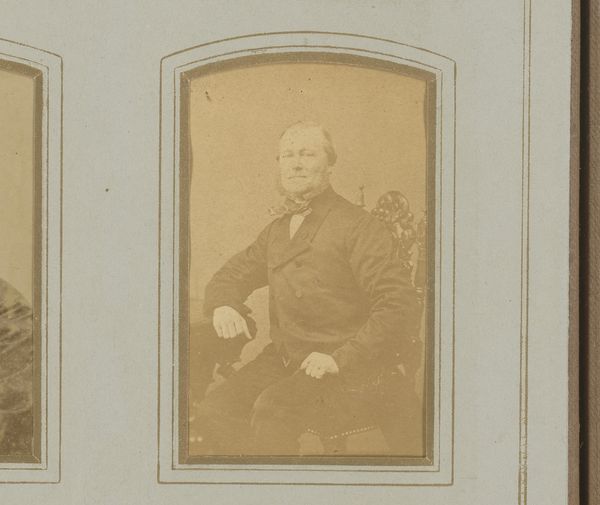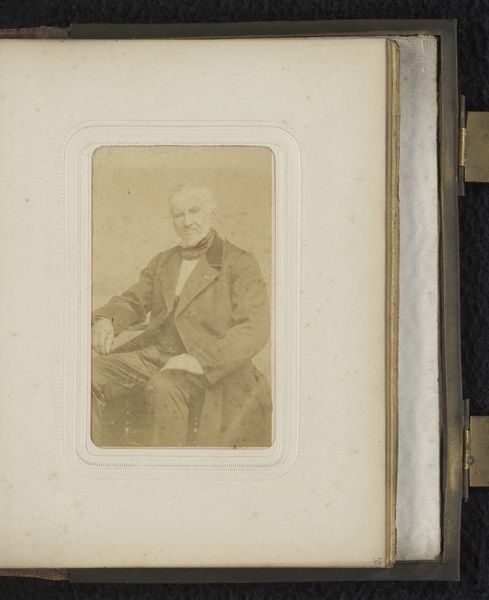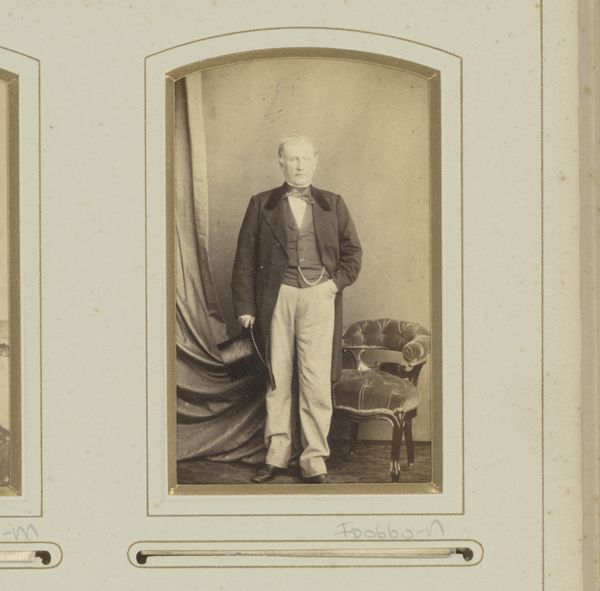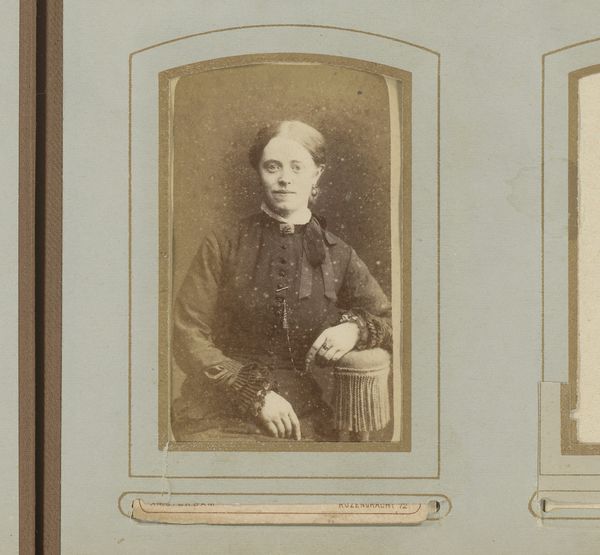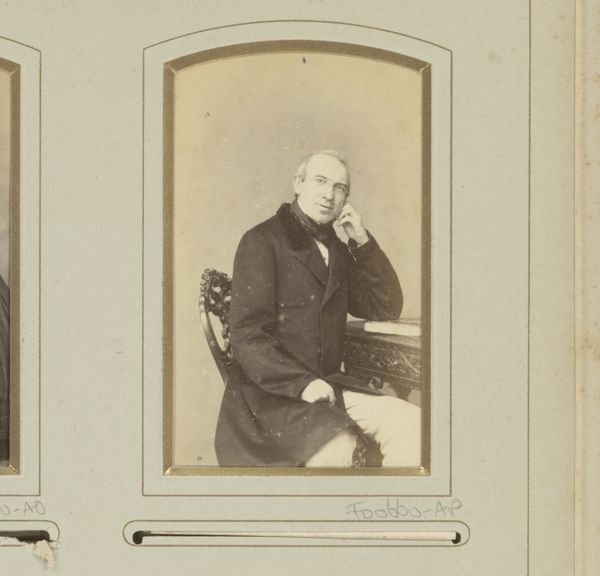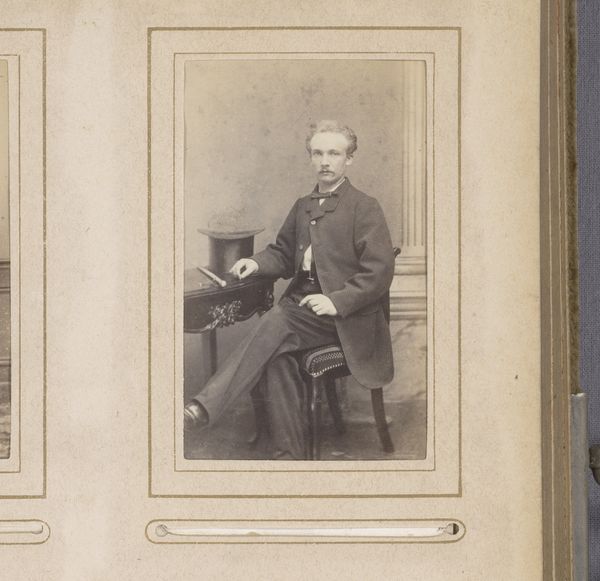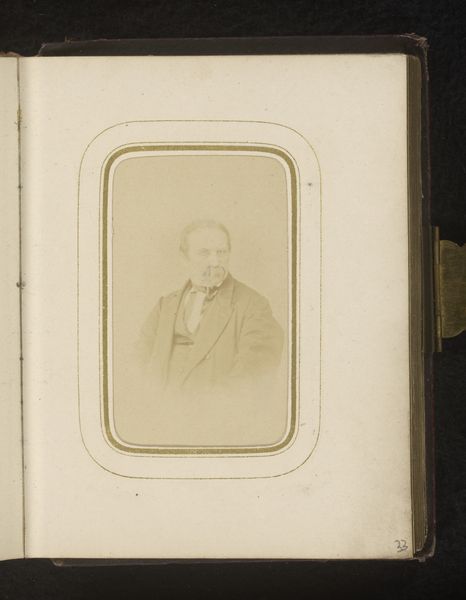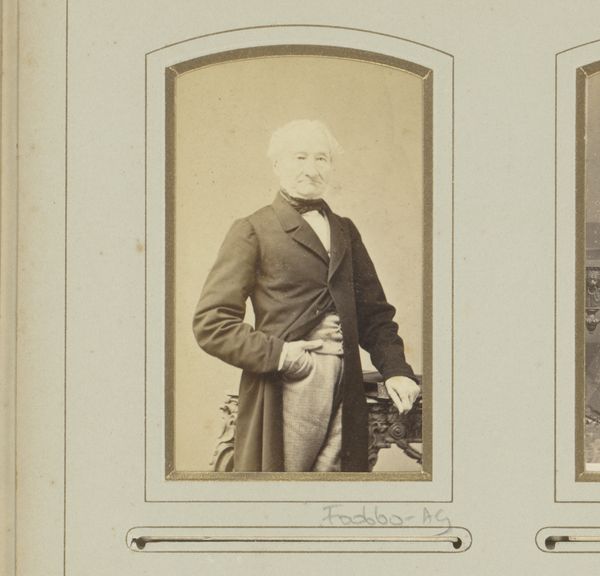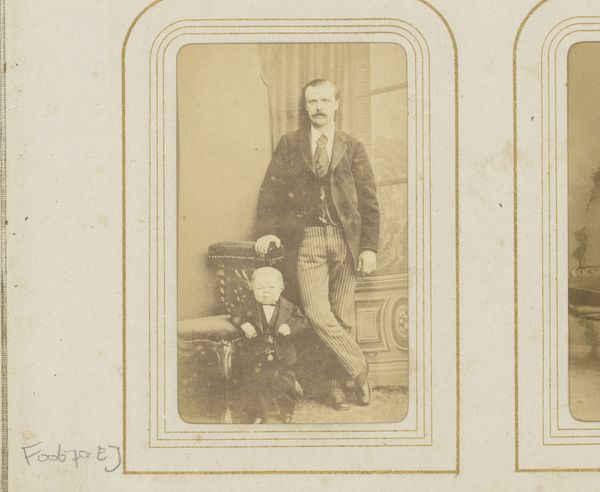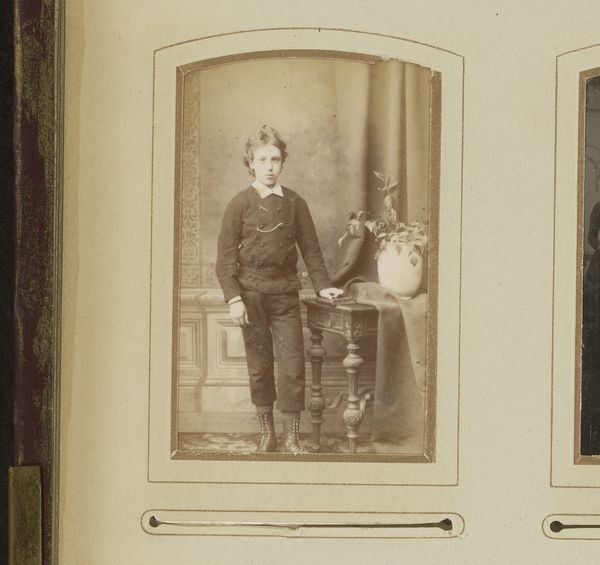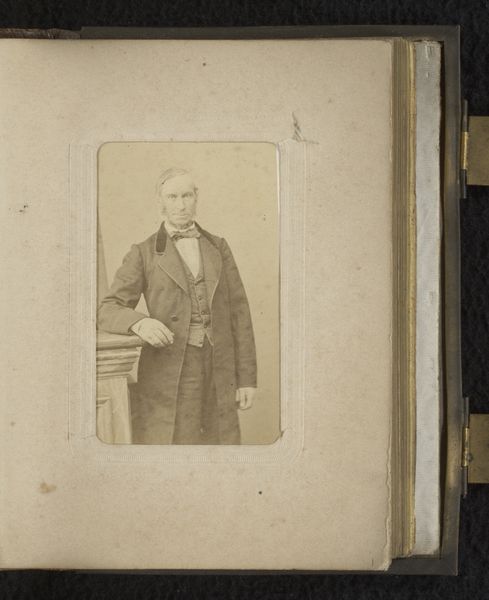
daguerreotype, photography
#
daguerreotype
#
photography
#
19th century
#
realism
Dimensions: height 82 mm, width 50 mm
Copyright: Rijks Museum: Open Domain
Editor: Here we have "Portret van een zittende man," a photographic daguerreotype from between 1850 and 1900 by Frederik Caland. It's amazing how much detail is captured. What are your thoughts on this early photographic portrait? Curator: It’s intriguing to consider the labor involved in creating a daguerreotype. Think about the process: the silver-plated copper, the polishing, the sensitization with iodine fumes... each step demanded precision and skill. How does this labor, hidden from the final image, influence our perception of the subject's status? Editor: That's an interesting point. I hadn’t considered the production process so deeply. Do you think the sitter would have been aware of that entire process, given how novel photography was at the time? Curator: Likely somewhat aware, yes. These early photographs weren't casual snapshots. They were often commissioned and relatively expensive, a deliberate act of portraying oneself. Consider the social context: Who could afford this? What did this represent in terms of class and access to new technology? Editor: It probably made photography a high-end status symbol. Curator: Exactly. And how might this impact the sitter's pose, their clothing – the very construction of their image? Every aspect reflects a carefully orchestrated presentation shaped by the materials and economic realities of the time. We need to appreciate how materials shaped artistic practices, even early photography like this daguerreotype. Editor: It's fascinating to think of materiality dictating the creative outcome, making visible underlying conditions like economic disparity. I hadn't fully appreciated the material and labor aspects behind this photograph before. Thanks! Curator: Indeed. Seeing art through the lens of production transforms our understanding. There is much more beneath the surface.
Comments
No comments
Be the first to comment and join the conversation on the ultimate creative platform.
